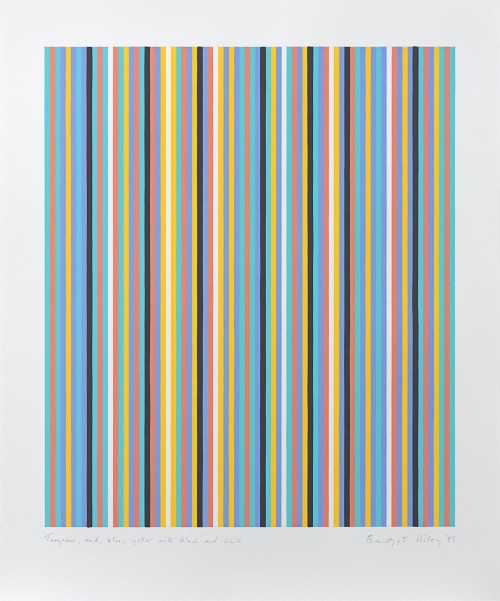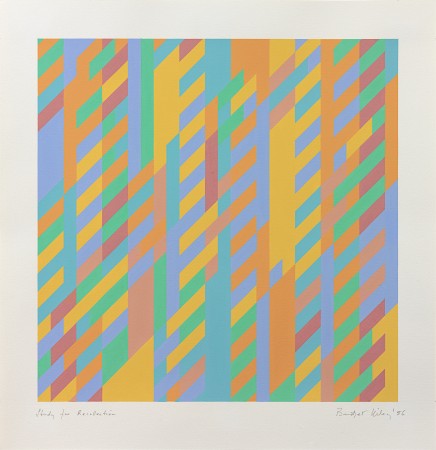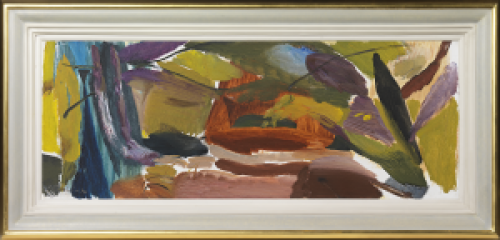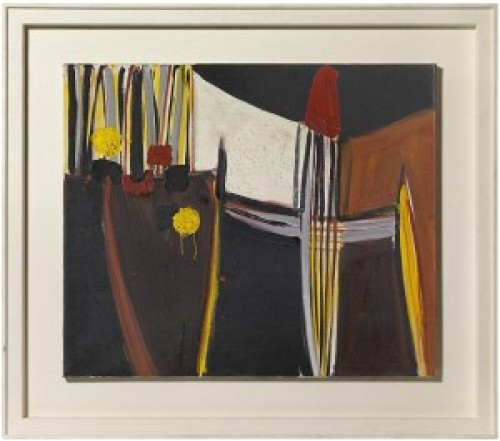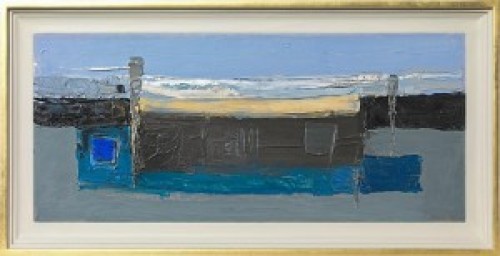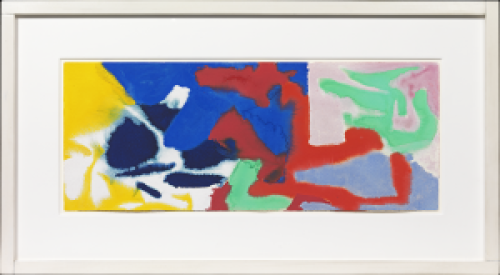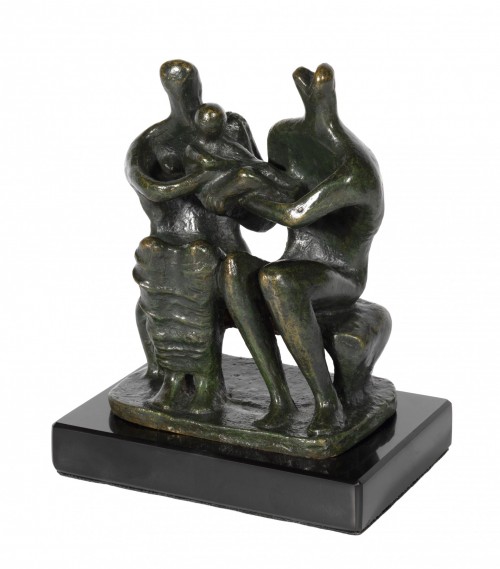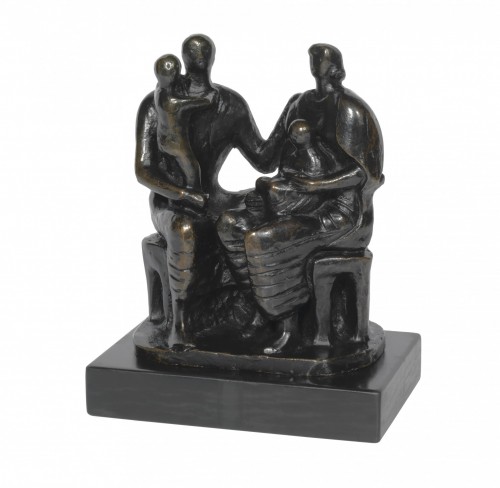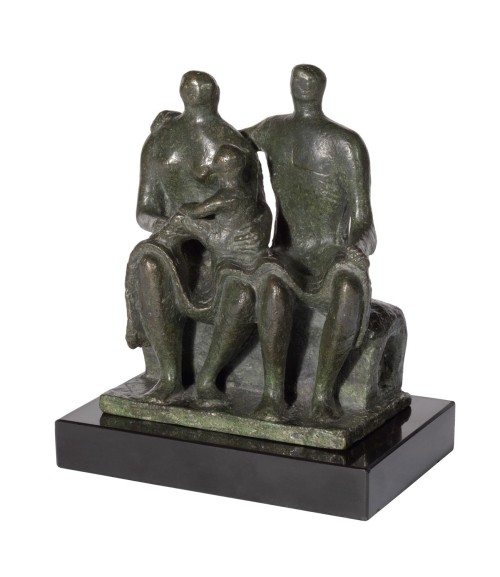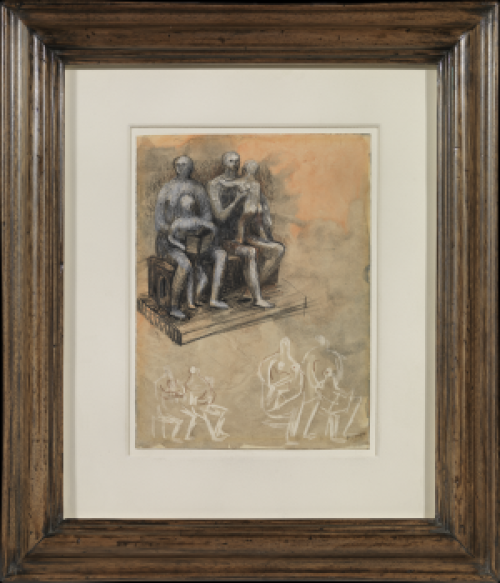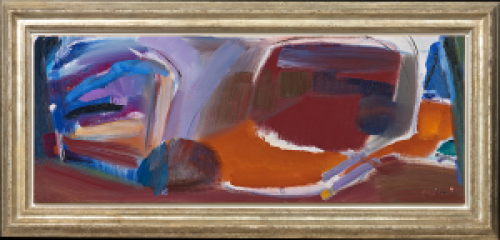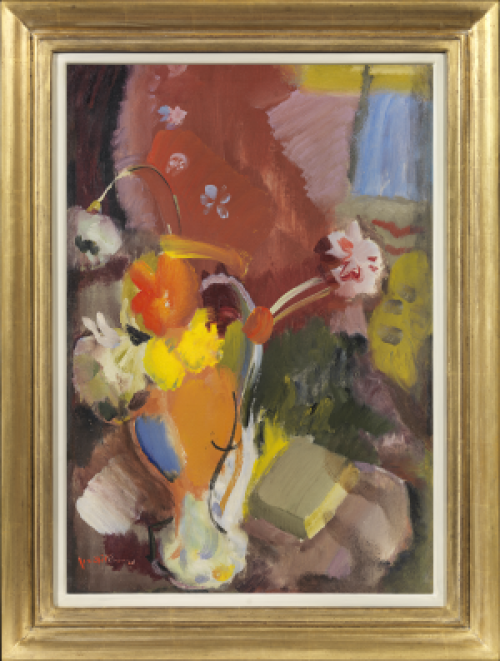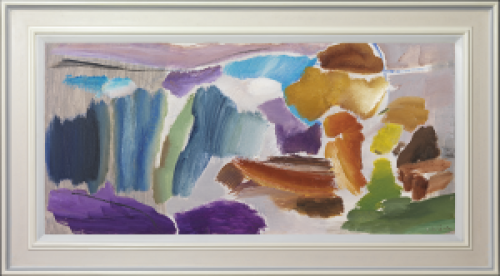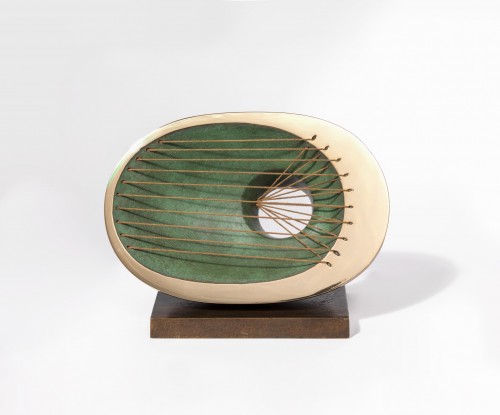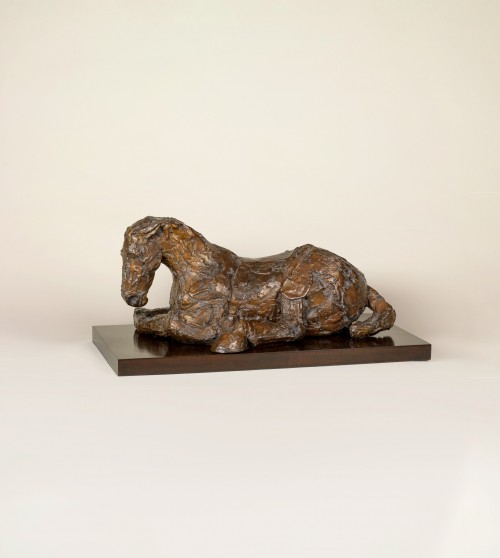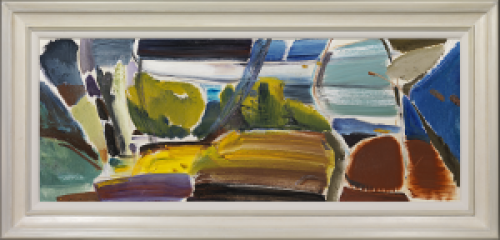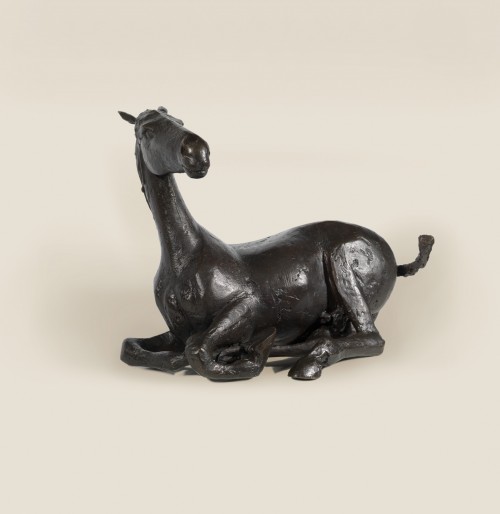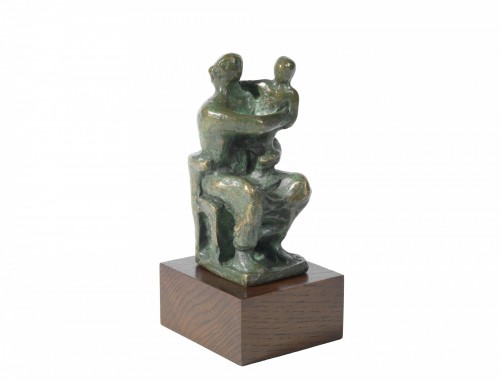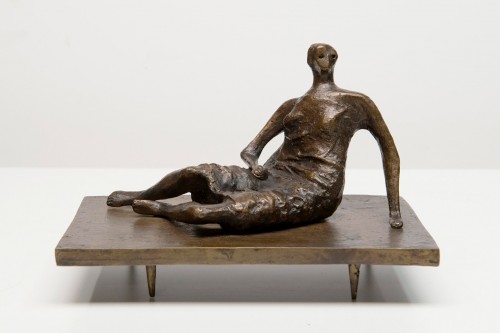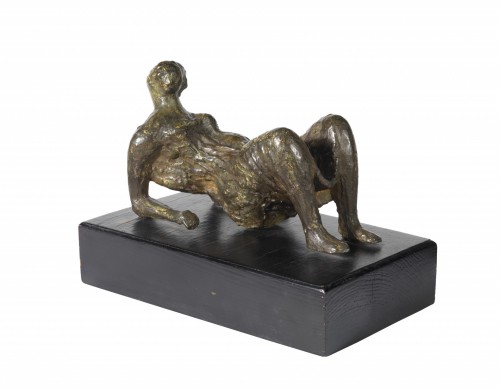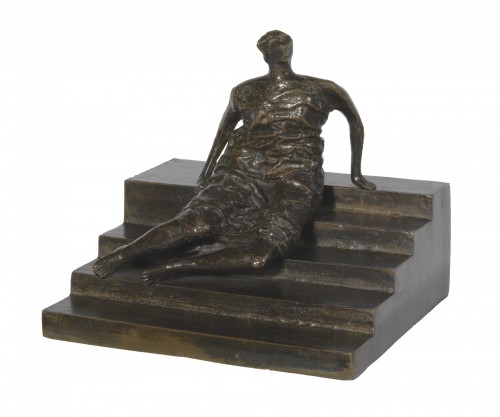BRIDGET RILEY CH CBE
Born London 1931
Ref: CD 114
Turquoise, red, blue, yellow with black and white
Signed, dated and inscribed lower left and right: Turquoise, red, blue, yellow with black and white / Bridget Riley '81
Gouache: 28 3/8 x 23 5/8 in / 72.1 x 60 cm
Frame size: 31 x 26 in / 78.7 x 66 cm
In a white gessoed box frame
Provenance:
Private collection, a gift from the artist in 2001
Turquoise, red, blue, yellow with black and white is related to a group of paintings by Bridget Riley, including Winter Palace (1981, Leeds Art Gallery), inspired by her trip to Egypt in the winter of 1979-80. In the catalogue for the Tate retrospective of Riley’s work held in 2003, Paul Moorhouse explains: ‘During that trip she visited the Nile Valley and the museum at Cairo, and was able to study, at first hand, the tombs of the later Pharaohs in the Valley of the Kings. Riley was astonished by the art she found in these ancient burial sites carved out of rock and located deep in the earth. These sacred places were dedicated to the dead, yet the tomb decoration was a vivid evocation of life and light. Though their creators had used only a limited number of colours - red, blue, yellow, turquoise, green, black and white - the walls of the chambers receded behind images in which could be seen a bustling affirmation of everyday existence. In looking at the art and craft of Ancient Egypt in the Cairo Museum, Riley recognised that the same colours had been used in all aspects of the Egyptians’ material lives, from the decorative to the purely functional.’[1]
Riley writes about her experience of the Valley of the Kings and the Tombs of the Queens, into which ‘…artists have brought about a feeling of sunlight, well-being and pleasure…Colour of course played an important role in such a scheme. The Ancient Egyptians had a fixed palette. They used the same colours – turquoise, blue, red, yellow, green, black and white – for over 3,000 years. These basic colours were used for everything... In each and every usage these colours appeared different but at the same time they united the appearance of the entire culture. Perhaps even more important, the precise shades of these colours had evolved under a brilliant North African light and consequently they seemed to embody this light and even to reflect it back from the walls of the underground chambers which no daylight ever reached.’[2]
The present work represents the exhilarating use of what Riley calls her ‘Egyptian palette’, recreated from memory on her return to London. The brilliance of these powerful colours necessitated a return to a simplified formal structure: the neutral stripe, and signified a new direction in her work. Like a passage of music, Riley carefully composes chords of pure colour across the paper, a coral red, yellow, turquoise and blue, punctuated by accents of black to establish the rhythm and white to provide a pause. Though she initially chose form, Riley continues to work with colour as a medium, ‘which I believe to be more precise because it is closer to our experience of the real world. Unstable and incalculable, it is also rich and comforting. For a painter it is an ideal vehicle because it can be both a revelation and merely the surface of things.’[3]
Bridget Riley, Winter Palace, 1981
Oil on fabric: 212 x 183.5 cm
Leeds Art Gallery
[1] Paul Moorhouse (ed.), Bridget Riley, exh cat, Tate Publishing, London 2003, p.22.
[2] The artist, ‘A Visit to Egypt and the Decoration for the Royal Liverpool Hospital’, 1984, The Eye’s Mind: Bridget Riley, Collected Writings 1965–1999, (ed.) Robert Kudielka, Thames & Hudson, London 1999, p. 110.
[3] ‘Into Colour’, Bridget Riley in conversation with Robert Kudielka (1978), cited in Robert Kudielka (ed), The Eye’s Mind: Bridget Riley Collected Writings 1965-1999, Thames and Hudson, London, 1999, p.104.

